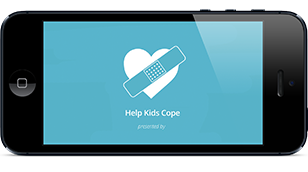It’s an unfortunate truth – childhood trauma exists
If you’re like most of us, the very phrase “childhood trauma” automatically strikes a note of fear. No one wants it to happen and no one wants to see trauma in a child they love. Unfortunately, childhood trauma does happen. And it can happen to children at any age—from birth through adolescence. Research shows that roughly 20% to 25% of children in the United States will experience some form of childhood trauma before they reach adulthood. But there is hope. You can do something to prevent, identify and overcome trauma for your child. It all starts when you Look Through Their Eyes.Some Leading Causes
The most common causes of childhood trauma include:- Accidents
- Bullying/cyberbullying
- Chaos or dysfunction in the house
- Death of a loved one
- Domestic violence
- Emotional abuse or neglect
- Incarcerated parent
- Parent with a mental illness
- Physical abuse or neglect
- Separation from a parent or caregiver
- Sexual abuse
- Stress caused by poverty
- Substance abuse
- Sudden and/or serious medical condition
- Violence (at home, at school, or in the surrounding community)
- War/terrorism
Among the causes of childhood trauma are bullying, community violence as well as natural disasters. Click on the videos below to learn more about bullying and community violence, and find resources available to help parents and families. Click on the natural disaster app below to learn about a free app from the National Child Traumatic Stress Network (NCTSN) that you can get to help you explain, prepare, respond and heal from these events.
How Can I Identify Childhood Trauma?

Ages 3 – 5
- Difficulty focusing or learning
- Unusual clinginess
- High level of anger or excessive temper
Young Children and Trauma
Children can experience trauma as early as infancy. In fact, young children between the ages of 0 and 5 are the most vulnerable to the effects of trauma since their brains are still in the early formative years. The problem is that babies and young children don’t have the understanding to process what’s going on around them, nor do they have the language to express what they are feeling. That’s why parents and caregivers have to Look Through Their Eyes—and Listen With Your Heart—to make sure your littlest children aren’t experiencing trauma or its negative effects.
Learn More
The "Stories" Series
“Stories for Children that Grownups Can Watch” is an innovative set of materials that help young children who have been exposed to trauma and/or violence, and to provide resource information for families. These include interactive DVDs with animated films, coloring/activity books, and tutorials from leading experts, and are available in English and Spanish.
Learn More

What Can I Do To Help?
Here are four things you can do to help a child deal with trauma:- Create an environment of safety
- Provide adult support.
- Teach them self-soothing techniques.
- Build on their strengths.
Where Can I Turn For Support?
For information to help you understand more about the prevention, identification and treatment of childhood trauma, turn to these leading organizations:
To get support for your child in Illinois, click on this link. It will take you to a list of agencies in Illinois organized by the age of child they serve and also their geographic locations.













